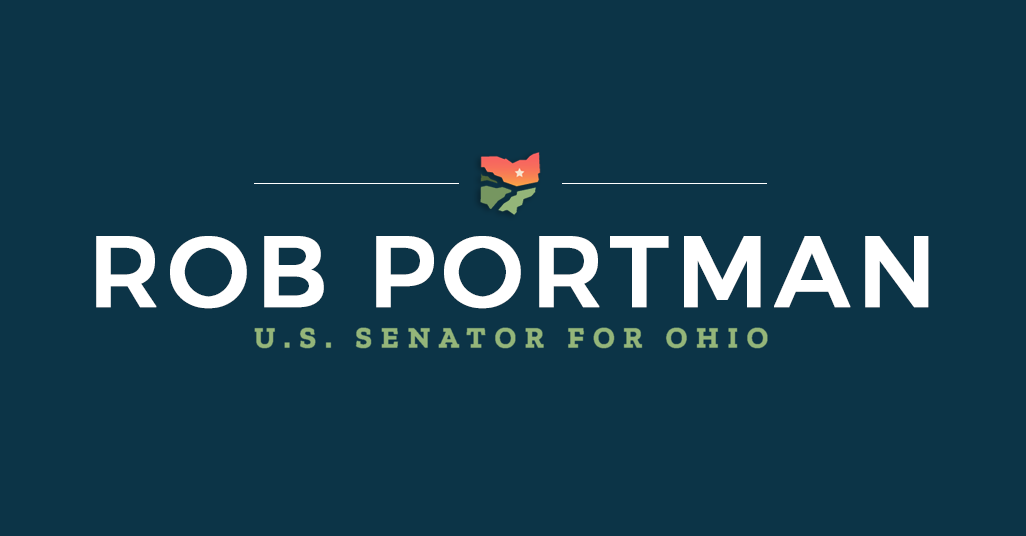Source: United States Senator for Ohio Rob Portman
November 16, 2021 | Portman Difference
The bipartisan Infrastructure Investment & Jobs Act (IIJA) makes an historic investment in America’s core infrastructure needs – roads, bridges, ports, broadband, water infrastructure, and other important assets. The law, which has been endorsed by more than 100 industry associations, trade groups, and unions, will create jobs, increase productivity, and pave the way for decades of economic growth and prosperity – all without raising taxes or increasing inflation.
Senator Portman played a key role in crafting the legislation, which President Biden signed into law on Monday, that will address specific infrastructure needs across Ohio.
Here is how the bill could benefit Southeast Ohio:
Roads and Bridges
The bipartisan IIJA provides $110 billion in funding for roads and bridges, including $9.2 billion that will come directly to Ohio to help with roads and highways and $483 million to help with Ohio bridges.
In addition, Ohio projects will also be able to apply for tens of billions in additional competitive grant funding opportunities, including $12.5 billion in the new the Bridge Investment Act, $5 billion in a new National Infrastructure Project Assistance grant program to help with large projects, $7.5 billion in the RAISE (formerly BUILD) grant program, and $8 billion in the Infrastructure for Rebuilding America (INFRA) grant program.
In some communities in Southeast Ohio, a closed road means a substantial 30 to 60 minute detour to get to school, work, the grocery store, or even the hospital. Landslides have closed roads, and needed culvert and repaving repairs have limited access throughout some smaller Southeast Ohio communities. The IIJA provides $1 billion in dedicated funding to culverts over the next five years through a competitive grant program to states and localities.
Ohio is also set to receive $95 million through the Appalachian Development Highway System to help with Southeast Ohio’s specific infrastructure needs. The ADHS has 33 corridors, five of which run through southern Ohio and stretch from Clermont to Washington Counties through US 50 and Franklin to Portsmouth through US 23. The IIJA provides dedicated funding for this network of transportation corridors across Appalachia for the first time since 2012.
Ports and Waterways
The infrastructure law provides $2.25 billion over five years for the Port Infrastructure Development Program (PIDP) through the U.S. Department of Transportation’s Maritime Administration. This competitive grant program is the main source of federal funding for port infrastructure needs and provides funding for planning, operational and capital financing, and project management assistance to improve port capacity and financing for ports like the Southern Ohio Port Authority in Scioto County and the Southeastern Ohio Port Authority in Washington County, among others.
The law also provides a total of $17 billion for the Army Corps of Engineers to address their infrastructure priorities, support coastal resiliency and flood control, which could include locks & dams on the Ohio River.
Broadband
Southeast Ohio is one of our state’s most unserved areas when it comes to broadband infrastructure. The difficult topography and lower population density make it more challenging to extend high-speed internet to families and businesses in the region. In 2019, Buckeye Hills, in partnership with Ohio University, conducted a study of Athens, Hocking, Meigs, Monroe, Morgan, Noble, Perry and Washington counties. That study showed that 80 to 90 percent of households in the rural areas of that eight-county region (in areas with 20 or fewer households per square mile) had no access to broadband. In Morgan County at large, more than 46 percent of residents lack access to high-speed internet.
The IIJA includes $65 billion for broadband, including more than $42 billion to states, U.S. territories, and the District of Columbia via block grants. This is consistent with Senator Portman’s bipartisan BRIDGE Act proposal to help close the gap in access to reliable high-speed internet that persists in certain communities. Ohio is set to receive hundreds of millions in broadband deployment dollars that the state could use this funding to help expand access throughout Southeast Ohio, making a difference in the lives of students, workers, and families.
Water Infrastructure
The law includes the bipartisan Drinking Water and Wastewater Infrastructure Act which provides a historic $15 billion for lead service line replacement and $10 billion to address PFAS. Parts of Southeast Ohio have lead pipes that need replaced, and parts – like the Garrett Ridge area in Western Vinton County – still do not have access to running water.
###
